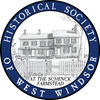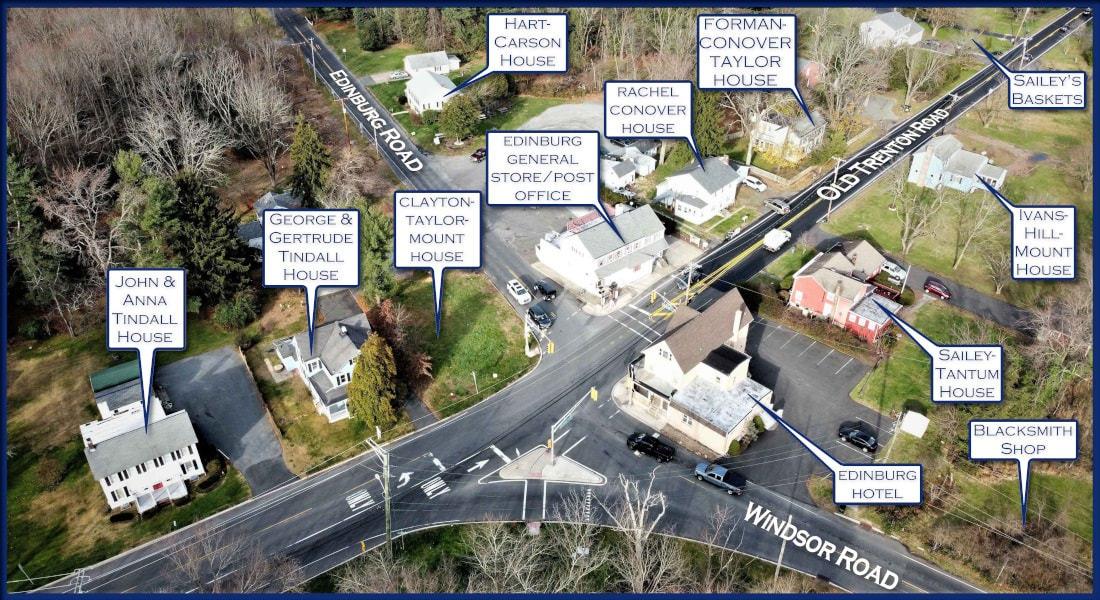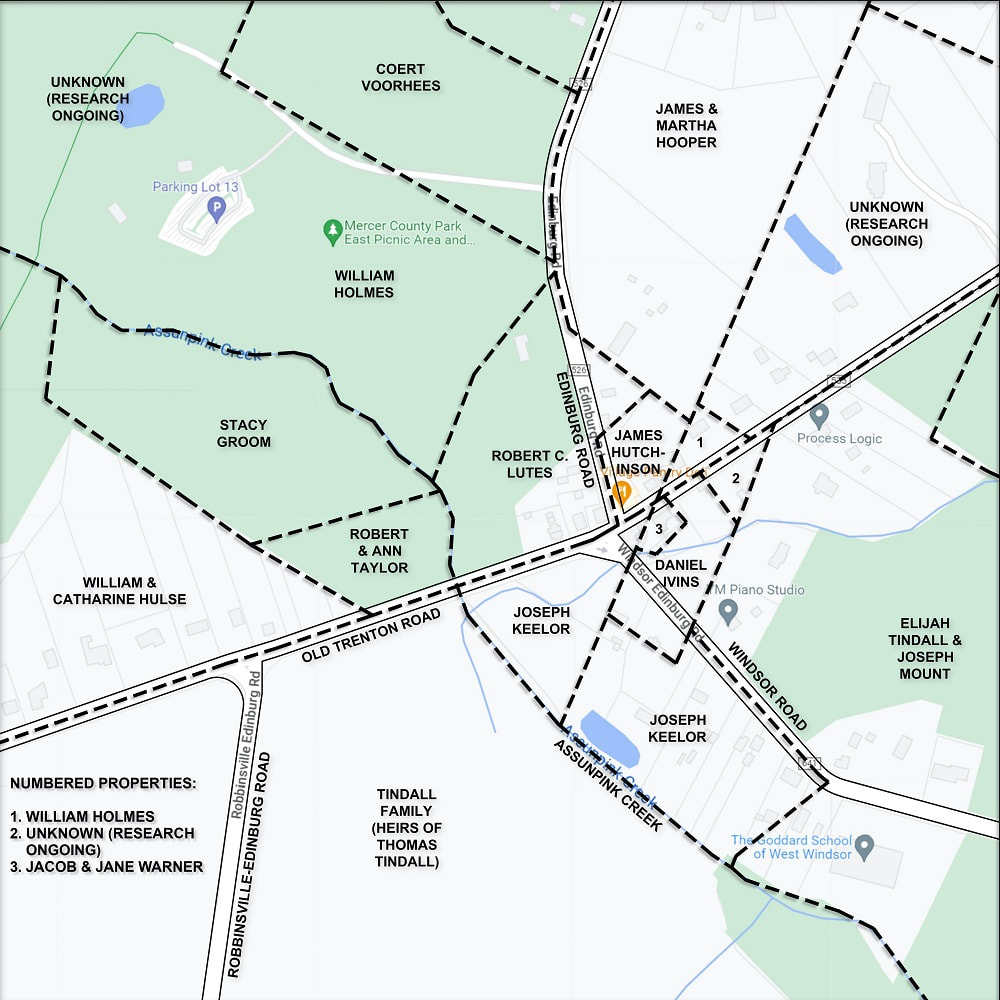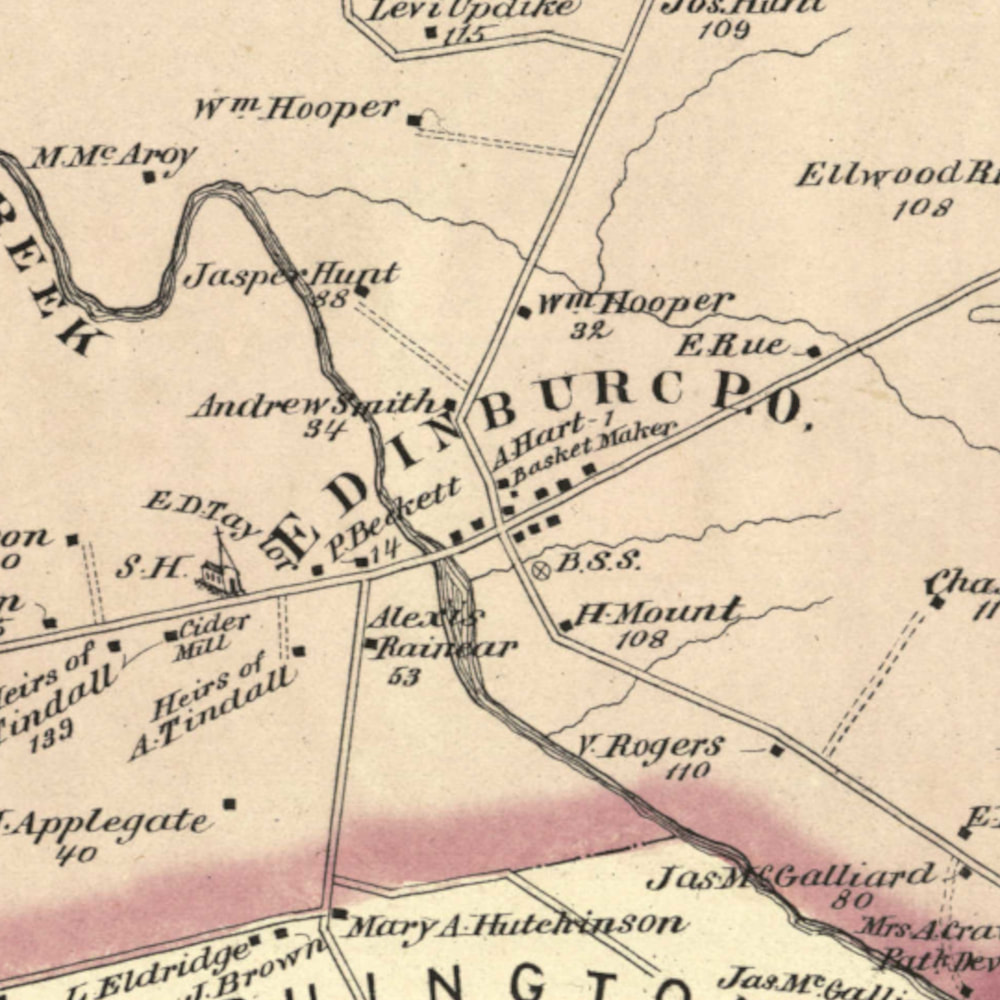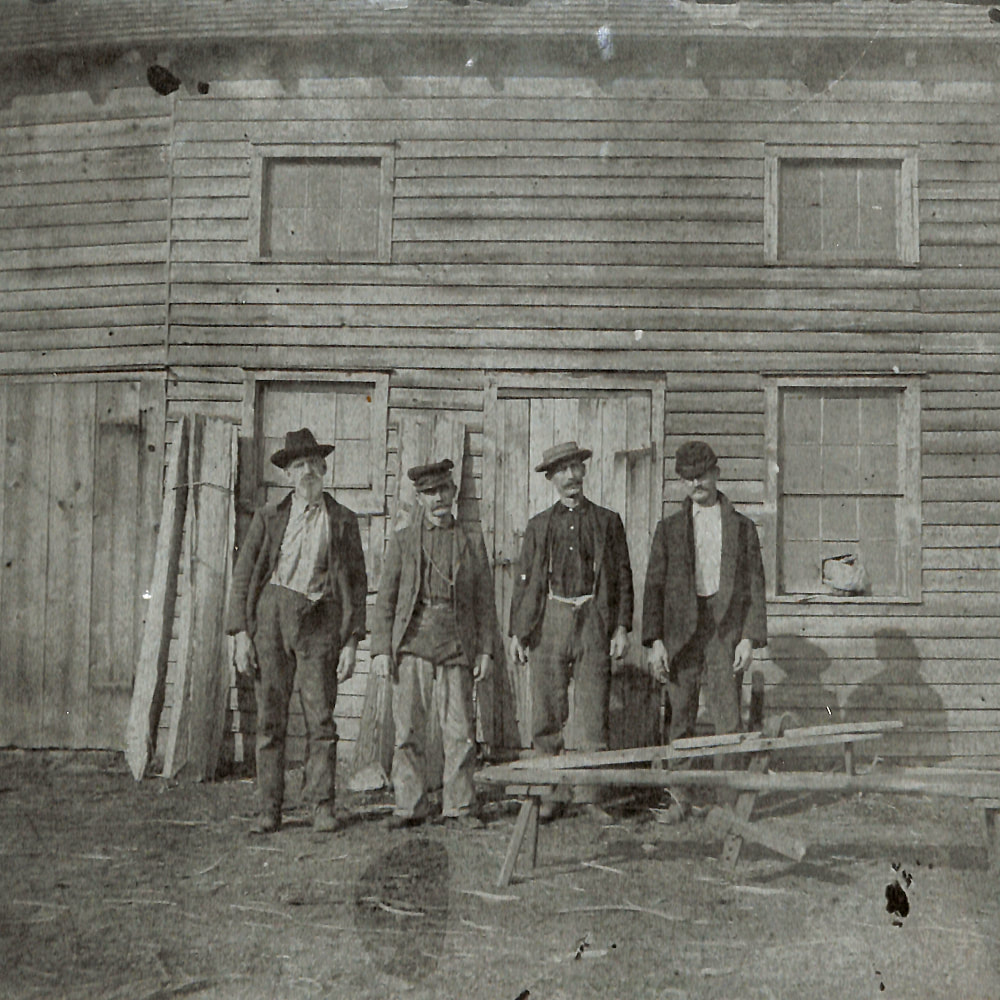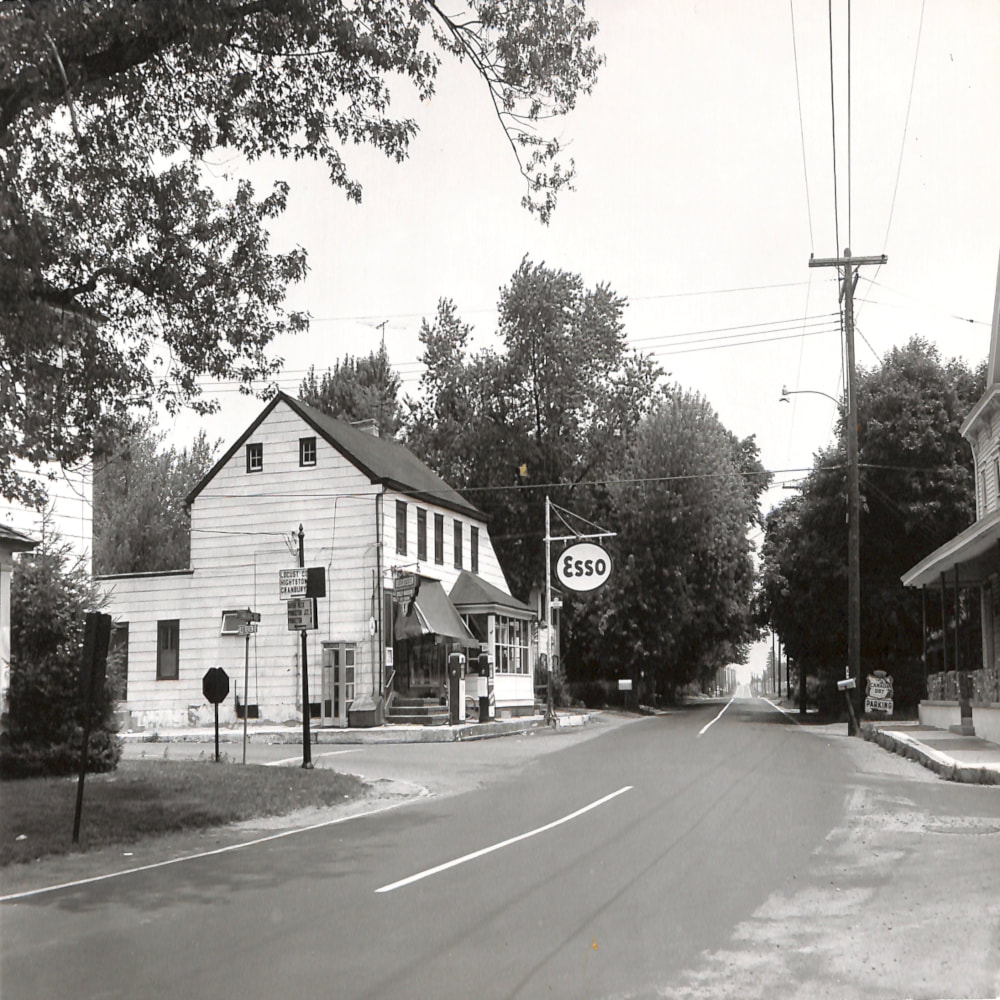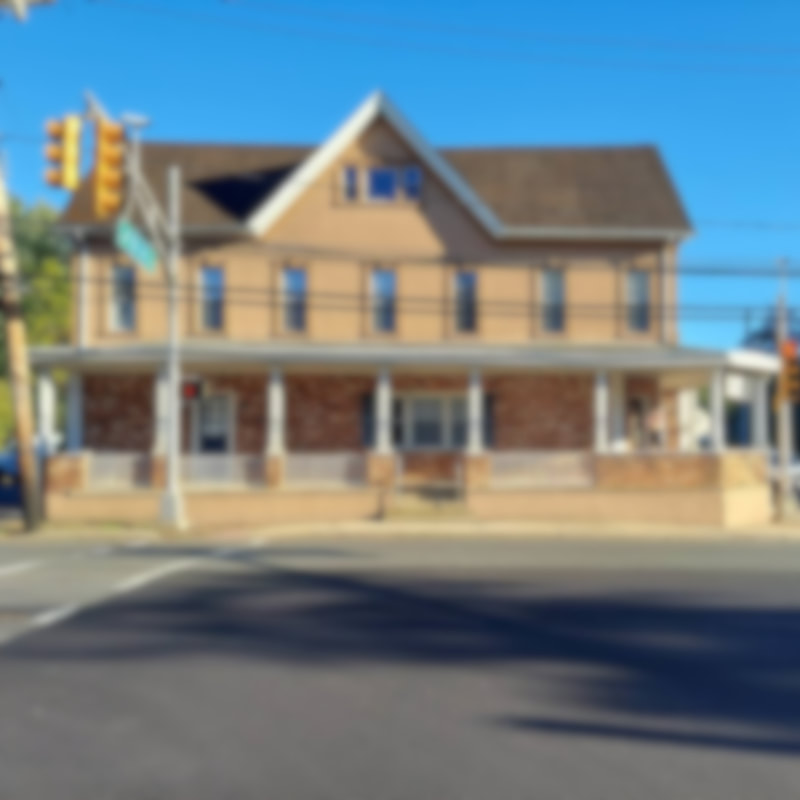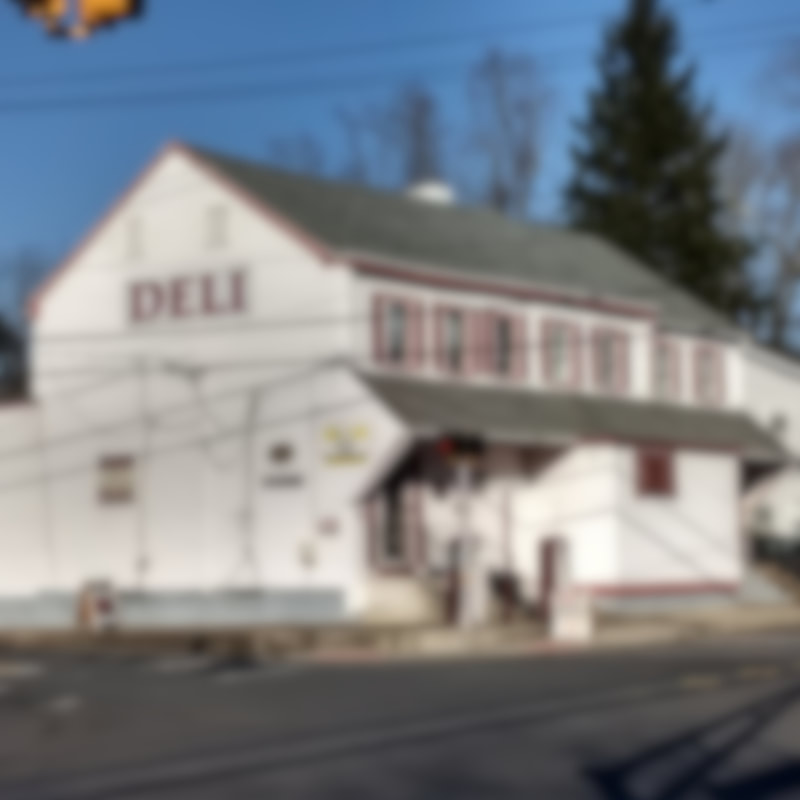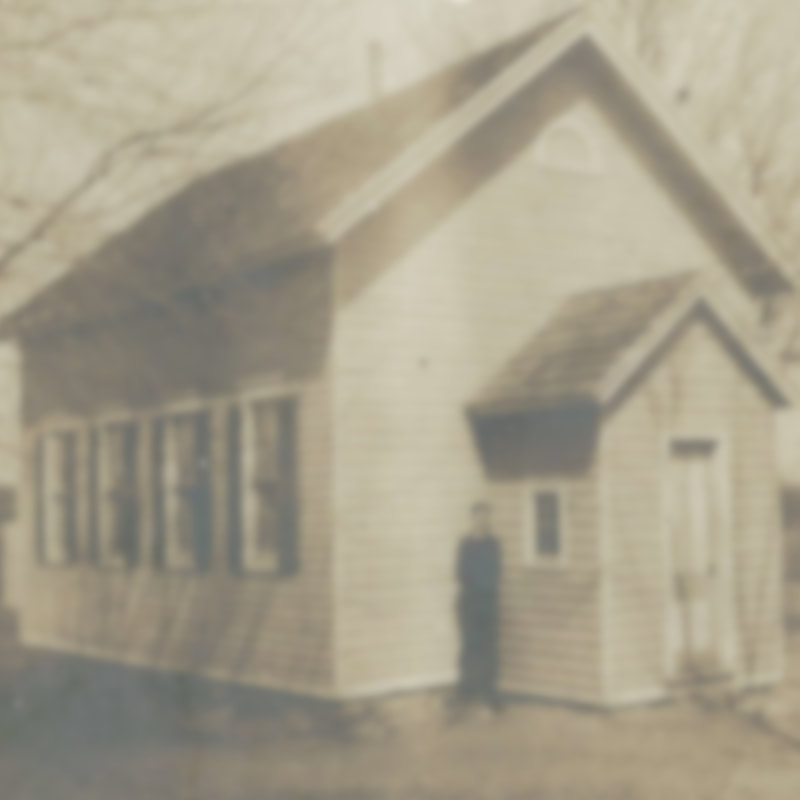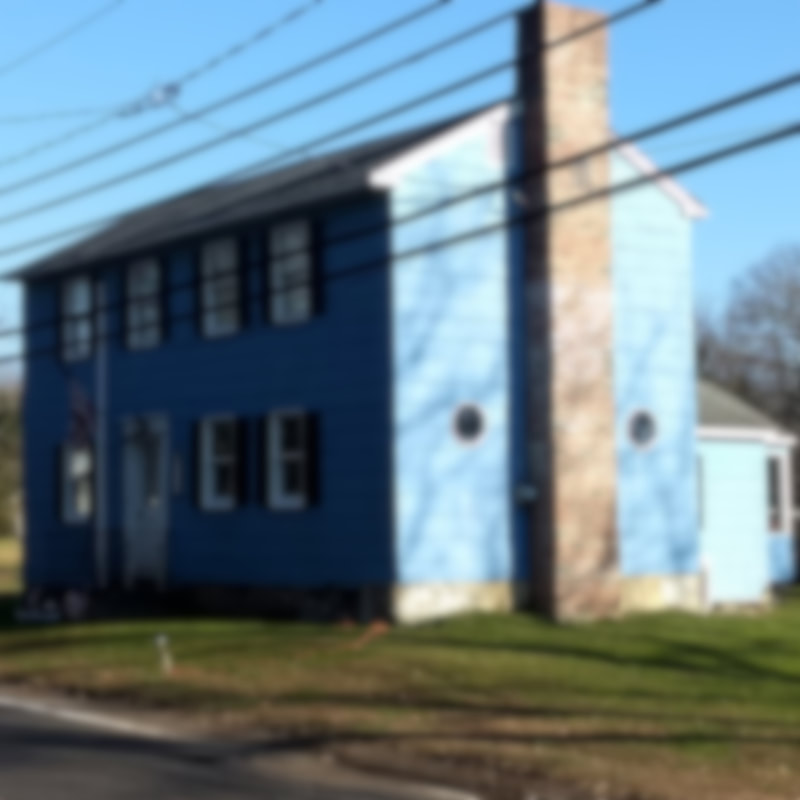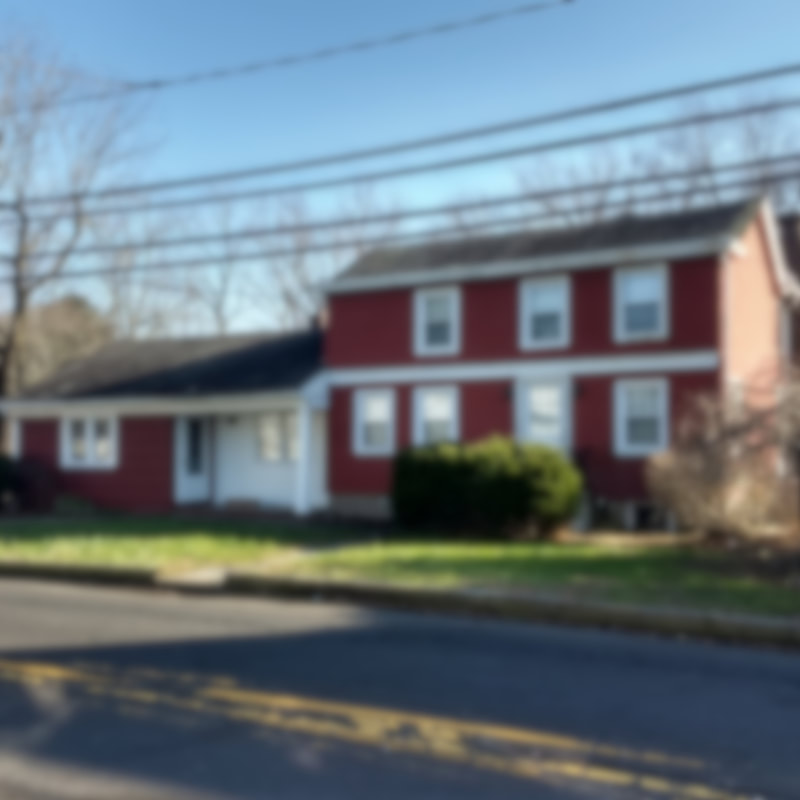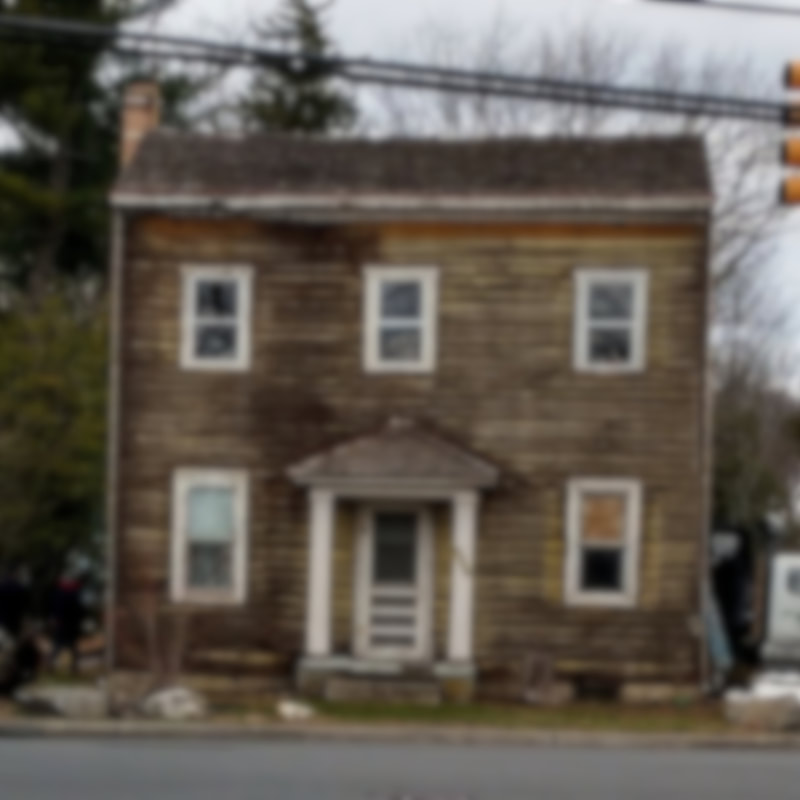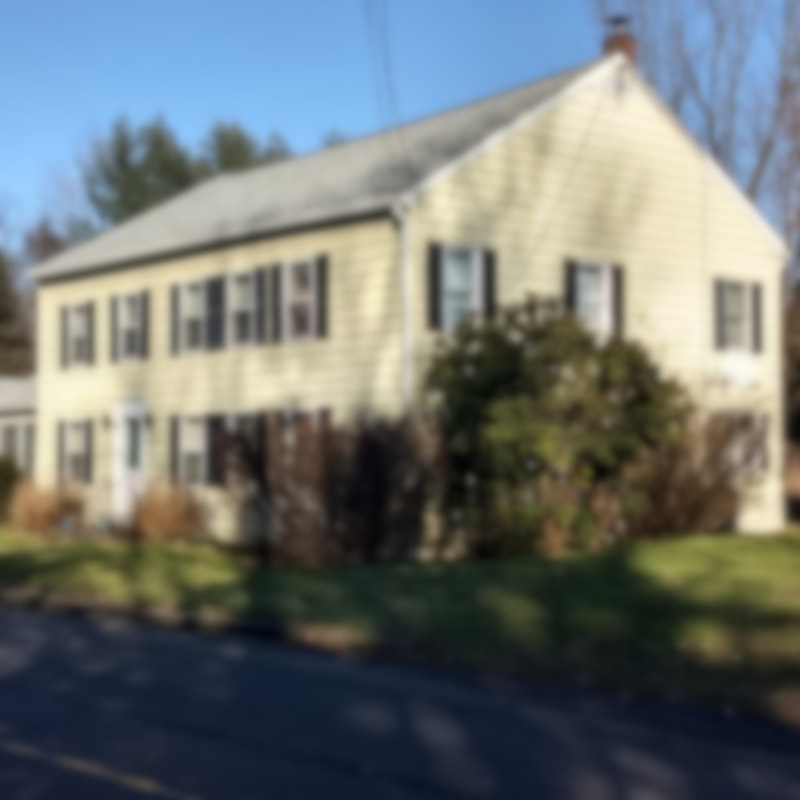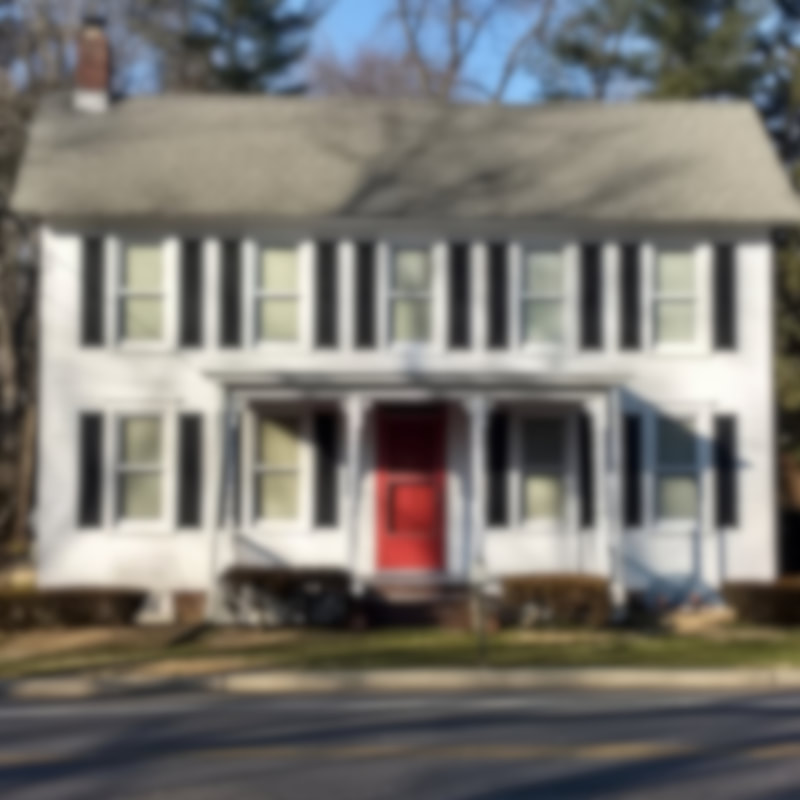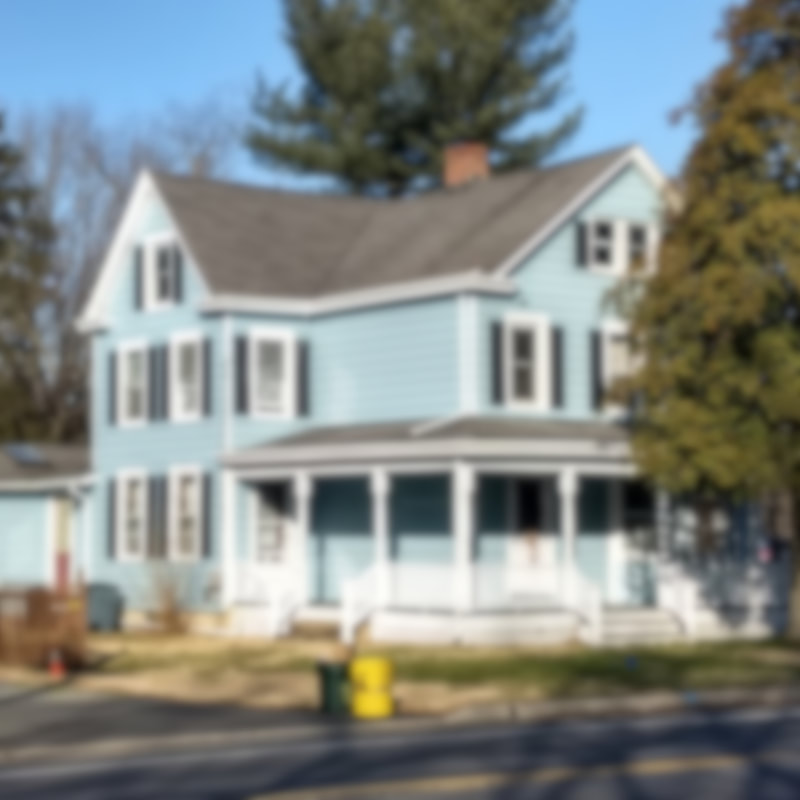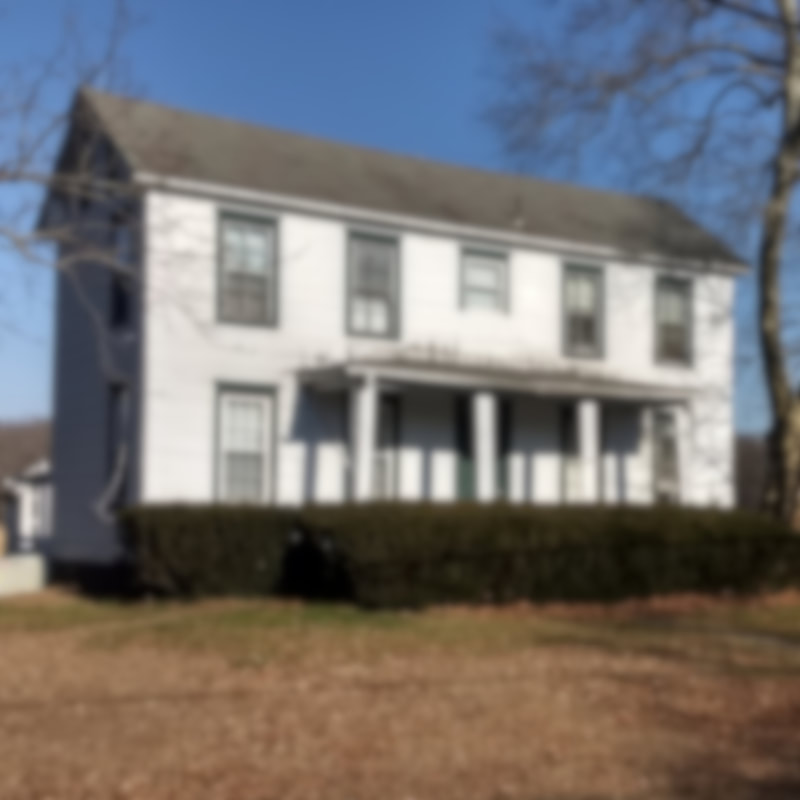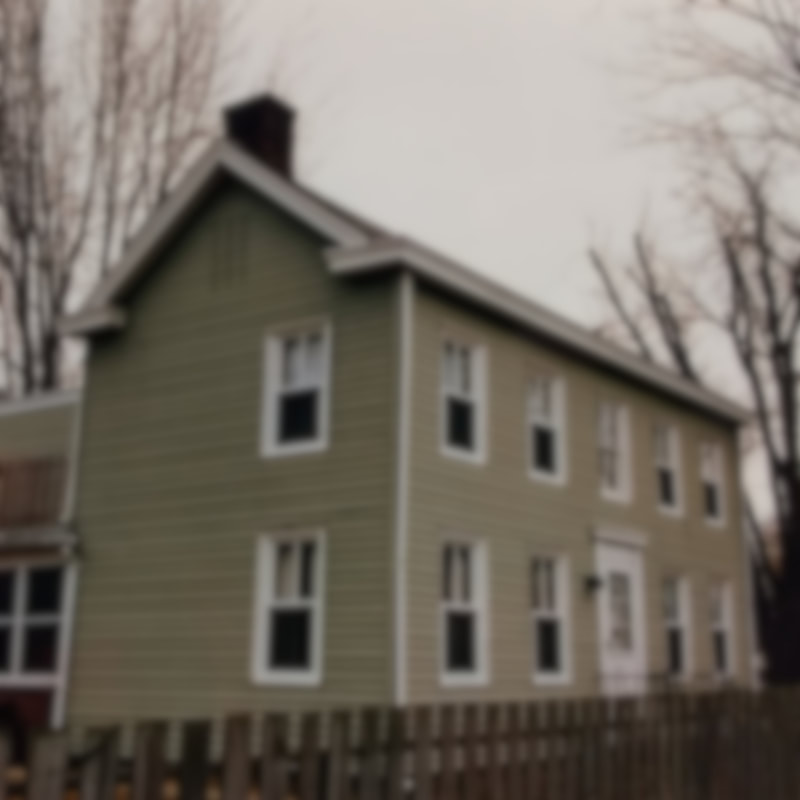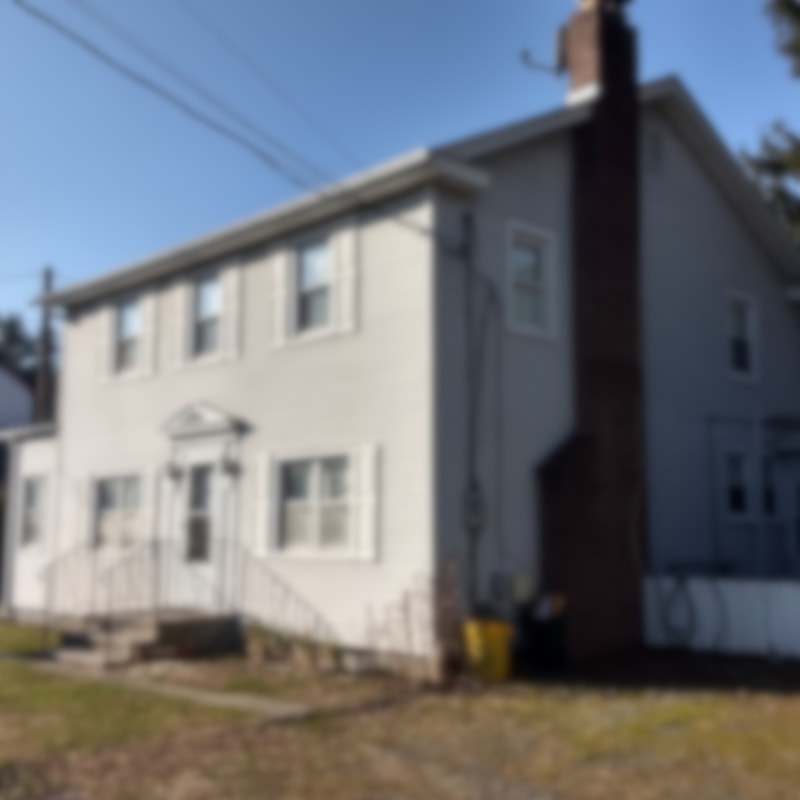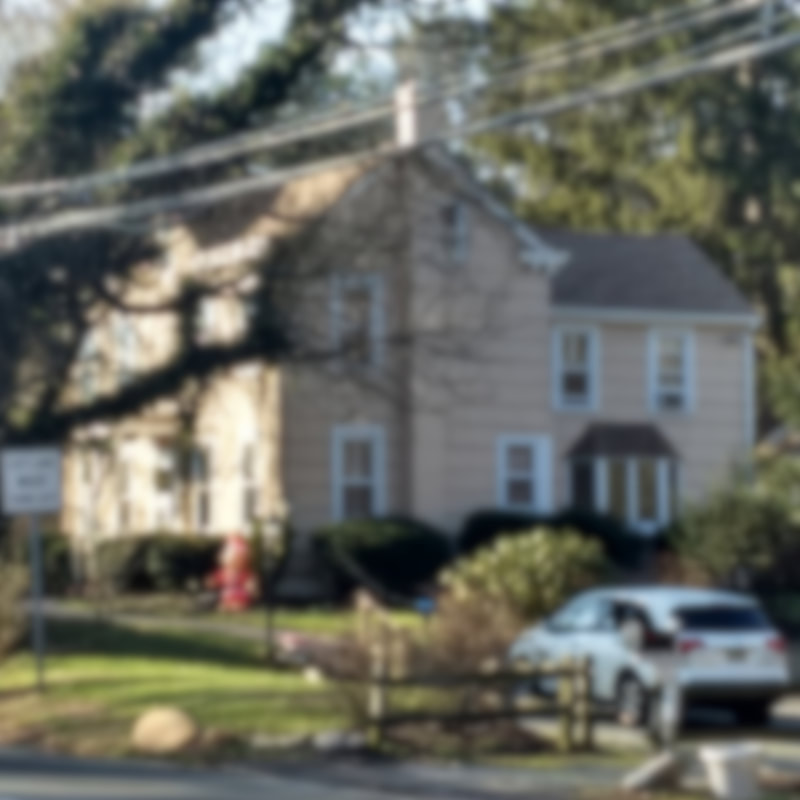Historic Community: Edinburg
Surrounding the crossroads of Edinburg, Windsor, and Old Trenton Roads is one of West Windsor's oldest historic communities. Initially named "Assanpink" - after the indigenous Lenape tribe that frequented this area - Edinburg likely grew as a 1700s-era stagecoach stopover but expanded into an industrial hamlet as well. Today, several of its old buildings remain, near agricultural land has been farmed for centuries. Explore Edinburg and its historical buildings below!
Historical Overview
|
The historic community of Edinburg has its roots in the area's original inhabitants. It was originally called "Assanpink," after both the local creek and the indigenous Leni Lënape tribe that frequented the area.[1] Lënape artifacts such as arrowheads, axes, and more have been discovered here over the centuries.[2] The name "Edinburg" began to supplant "Assanpink" by the mid-1800s.[3] This name was reputedly chosen to honor a popular Scottish local.[4]
Land acquisition in the Edinburg area began in the very late 1600s or very early 1700s. In 1703, two Lënape leaders – Hapohucquona and Tolomhon – sold hundreds of acres of present-day West Windsor south of the Assunpink Creek to David Lyell (of “Penn-Lyle Road”).[5] Lyell also owned thousands of acres north of the Assunpink Creek.[6] Thomas Tindall is another known early-1700s landowner, whose vast estate stretched south of the Assunpink Creek.[7] However, Edinburg probably did not see its first wave of colonial settlement until the mid-1700s. In 1754, a road was surveyed to connect Princeton to Allentown and ran through Edinburg (its route included present-day Old Trenton, Robbinsville, and Edinburg Roads).[8] Other avenues linking Edinburg to various settlements, such as Windsor Road (leading to the village of Windsor in present-day Robbinsville) or Line Road (Mercerville/Hamilton Square), also date to the mid-1700s.[9],[10] These likely served as stagecoach routes that helped grow Edinburg. |
|
Some of the old families, such as the Tindalls, Conovers, Hutchinsons, Cubberlys, and Mounts still reside here at the time of this writing (2023). These pioneers cleared swaths of woodland and established expansive farms stretching as far as the eye could see. They also erected sturdy barns and houses of timber and stone.
Township tax records claim that the oldest remaining house in West Windsor is the Ivans-Hill-Mount house at 1727 Old Trenton Road and may date back to 1742.[10] Another pioneer landmark - the nearby ruins of the John Rogers house (circa 1751-61) - stands just southwest of the Mercer County Park marina as a memorial to one of West Windsor’s earliest and wealthiest families.[11] The remnants of the building are now an open-air historical exhibit. In 1761, Thomas Tindall operated an inn nearby.[12] On Windsor Road, there was also “Hooper’s Tavern" which, starting around 1764, was run by Thomas Hooper[13] - a British loyalist who fled to Canada with his family to escape persecution after the Revolutionary War.[14] This building was probably the site of frequent Windsor Township meetings in the mid-late 1700s.[15] |
|
In the very early 1800s, Hooper’s Tavern was replaced by the Edinburg Hotel at the crossroads.[16] It, and the Edinburg general store across the street - also from the early 1800s[17] - are the community's two primary historical landmarks. The store also housed a post office from 1851[18] until the late 1800s or early 1900s.[19] Through much of the 20th century, it was also a gas station; two vintage pumps still stand at the intersection.
A number of industries developed here over the generations. At an early day Daniel Howell reputedly had a blacksmith-shop here. David Hill is said to have arrived in 1828, and carried on blacksmithing until 1870, when he was succeeded by his son, James. Wheelwrights from time to time had shops. The last was D. Frank Hill, in the 1870s-80s.[20] Thomas Leonard reputedly established a foundry around 1810 and Elison Carson purportedly ran a grist mill near the junction of Robbinsville-Edinburg and Old Trenton Roads.[21] In the mid-1800s, Amos Tindall owned a distillery and cider mill and specialized in "applejack."[22],[23] Other 1800s-era businesses included a broom factory, a cooper, a wheelwright shop, several shoemakers' establishments, a chair maker, a weaving shop, and two basket factories.[24] |
|
Edinburg retained much of its historical character until the latter half of the 20th century. The suburban community of Edinburg/Jefferson Park off Edinburg and Conover Roads, which began in the 1960s,[25] was a portent for more numerous and expansive 1990s/2000s suburban developments nearby. Mercer County Community College opened in 1972 on the site of former farmland.[26] Around the same time, the Mercer County Parks Commission dammed the Assunpink Creek, creating Mercer Lake as part of the larger Mercer County Park and even broader “Assunpink Watershed.”[27],[28],[29] Consequently, thousands of acres of old farmland and dozens of historical farmhouses vanished forever.
Still, some of old Edinburg remains. A few dozen 1700s, 1800s, and early 1900s buildings still dot the greater landscape. Hundreds of acres continue to be farmed along Robbinsville-Edinburg, Old Trenton, and Windsor-Edinburg Roads, by descendants of some of the community’s earliest settlers. What's left amid this change and development makes recognizing and preserving Edinburg's history all the more critical. |
Historical Edinburg Landmarks
Click on each of the images below to learn more about some Edinburg landmarks. We recommend reading them in order. More may be added as research improves.
Bibliography
- “David Lyell’s ‘Great Tract,” 1731.” n.d. Map. New Jersey Historical Society. Located at the New Jersey Historical Society’s headquarters in Newark, NJ. Created in 1731 to survey David Lyell’s “Great Tract” in present-day West Windsor in order to split it into 7 components for his heirs. Division lines as drawn and measured appear to align with several of West Windsor’s colonial-era roads.
- Ligeti, Paul T. I., and Trevor LePrevost. Phone Call with Trevor LePrevost. Personal, March 2023. Note: Trevor grew up in Edinburg in the mid-late 1900s and personally knew many of the people who lived in the village. He also has personally discovered many artifacts over the years and knew many others who did as well.
- "West Windsor." Trenton State Gazette, November 4, 1848.
- Reed, Marvin R. West Windsor Township People -- Purpose -- Progress New Jersey Tercentenary, 1664-1964: West Windsor : Tercentenary Committee, 1964.
- Lyell, David, Hapuhacquona, Tolomhon, and Mahlon Stacy. Ms. Indenture. New Jersey State Archives , 1702/3. Sale of land south of the Assunpink Creek from Indians Ha-puhaquona and Tolomhon to David Lyell. Dated January 15, 1702 in Julian calendar (1703 in Gregorian calendar).
- Hamilton, Andrew, George Clarke, and David Lyell. Indenture. New Jersey State Archives, 1697. Conveyance of 4,700 acres (as written in the deed) from Andrew Hamilton via Executor George Clarke to David Lyell. Found in New Jersey State Archives Early Land Records - F (EJ): Folio 717 (SSTSE023)
- Tindall, Aesha, Tindall, John, Tindall, Thomas. “Indenture.” Windsor, 1798. Located in the New Jersey State Archives, Middlesex County Deed Book 11 Page 790.
- Ibid.
- Ibid.
- "West Windsor Tax Assessor Address List, 2019.” West Windsor, 2019. List of all residences in West Windsor with dates of construction, according to tax assessor. Sent to the Historical Society by Lorraine Jones and Dawn Moretti.
- “Preservation Plan for the John Rogers House - Mercer County Park - West Windsor Township, New Jersey,” January 31, 2001.
- Windsor Township, 1761. Plea for Tavern License from John Tindall to Middlesex County. Located in the New Jersey State Archives, Middlesex County Tavern License collection.
- Windsor Township, 1764. October 1764 Plea for Tavern License for Thomas Hooper to the Majesties Judges and Justices of the Peace in Perth Amboy (seat of Middlesex County). Located in the New Jersey State Archives, Middlesex County Tavern License collection.
- Neal, Nancy E. A United Empire Loyalist Family: The Life and Times of Thomas Hooper of Bedeque, Prince Edward Island, Canada, and His Descendants, 1734-2004. Summerside, PE: Crescent Isle Publishers, 2006.
- Windsor Township, 1764. October 1764 Plea for Tavern License for Thomas Hooper to the Majesties Judges and Justices of the Peace in Perth Amboy (seat of Middlesex County). Located in the New Jersey State Archives, Middlesex County Tavern License collection.
- Hooper, James, Hooper, Martha, Keelor, Joseph. “Indenture.” West Windsor, 1806. Located in the New Jersey State Archives, Middlesex County Deed Book 6 Page 667.
- “To Be Rented, a Handsome New Dwelling-House.” Trenton Federalist, February 12, 1816.
- “A New Post Office has been established at Edinburg in this county, and R. Rogers appointed Post-master.” State Gazette, January 30, 1851.
- Tantum, Bernice. “Broadside,” 1993. Historical Society of West Windsor newsletter, Autumn, 1993. History of the Village of Edinburg. With contributions from Dorothy M. Tindall, Pauline Conover, Nellie & Al Carson, and Joe & Madeline Taylor.
- Woodward, Evan Morrison, and John Frelinghuysen Hageman. History of Burlington and Mercer Counties with Biographical Sketches of Many of Their Pioneers and Prominent Men. Philadelphia, Pennsylvania: Everts & Peck, 1883.
- West Windsor Township: People - Purpose - Progress. West Windsor, New Jersey: West Windsor Township, 1964.
- Lake, D J, and S N Beers. Map of the Vicinity of Philadelphia and Trenton from Actual Surveys By D.J. Lake and S. N. Beers. Assisted by F. Beers, L. B. Lake and D. G. Beers. Philadelphia, PA: C.K. Stone and A. Pomeroy, 1860. https://dspace.njstatelib.org/xmlui/handle/10929/34112?show=full.
- “West Windsor Township.” Map. 1875 Historical Atlas of Mercer County, New Jersey - Map of West Windsor. Philadelphia, PA: Everts & Stuart, 1875. https://www.loc.gov/item/2010587333/.
- Woodward, Evan Morrison, and John Frelinghuysen Hageman. History of Burlington and Mercer Counties with Biographical Sketches of Many of Their Pioneers and Prominent Men. Philadelphia, Pennsylvania: Everts & Peck, 1883
- “West Windsor Aerial Photography Composite Map, 1965.” Map. Historical Society of West Windsor - Map Archives. West Windsor, NJ, 1965.
- Greer, Thomas. “Mercer College Opens in ‘72.” The Evening Times. January 25, 1972.
- “Plans Revealed for Huge Mercer County Complex.” The Record. January 27, 1965.
- “West Windsor Aerial Photography Composite Map, 1970.” Map. Historical Society of West Windsor - Map Archives. West Windsor, NJ, 1970.
- “West Windsor Aerial Photography Composite Map, 1975.” Map. Historical Society of West Windsor - Map Archives. West Windsor, NJ, 1975.
